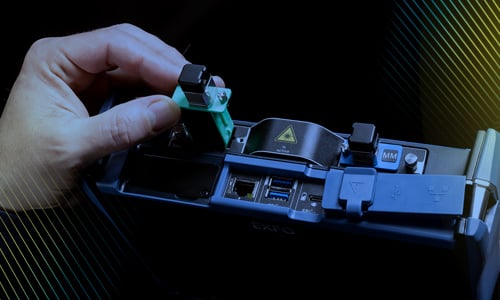Data boom brings fiber monitoring into focus
Previously published on Light Reading
Super Bowl LI made history in more ways than one. Sure, it featured the largest comeback ever in the big game, as the New England Patriots rose from 25 points down to tie and then beat the Atlanta Falcons. However, it also accounted for the most data usage ever during a Super Bowl, according to several reports.
AT&T, for example, said data usage over its network was almost twice what it was during last year's Super Bowl, and other carriers made similar claims. That's a lot of stress on networks, and ultimately helps highlight the importance of effectively monitoring those networks -- not only the wireless facilities that all the devices in use are connecting with, but particularly the fiber networks that must support all of that data.
Fiber network monitoring has always been a necessary part of network management, but now it is becoming an even bigger responsibility, and key to carrier competitiveness. Operators have more fiber in their networks than ever, and fiber density within specific markets is constantly increasing.
Not only that, but the fiber network landscape continues to grow more complex, with so many different types of companies owning fiber or leasing it. This complexity creates a patchwork of responsibility, in which it is not always easy to determine who should be responsible for repairing a fiber cut -- and further highlights the importance of effective monitoring.
But the sheer quantity of fiber or the complex nature of fiber-leasing arrangements are not the biggest reasons that fiber network monitoring is more important than ever. It's not so much about the network at all, but the services being carried. Or, to put it another way, it's all about the quality of the bits.
Monitoring fiber networks goes hand-in-hand with service assurance. It's difficult to decouple one from the other; nor should we try. So it's important to have dependable tools for monitoring fiber spans, such as full-featured optical time domain reflectometers, and to consider monitoring not just a method of looking for cuts, but also the important practice of looking for trends in degradation and loss throughout the network that could be signs of problems to come.
Fiber monitoring has become important enough that some transmission systems now include monitoring capabilities that traditionally have been housed in dedicated monitoring tools. That practice may save operators some money and labor hours, but they also need to be careful about evaluating such integrated tools to be sure that key functions and performance have not been sacrificed in the name of expense.
The data usage we saw during the Super Bowl was an event-driven spike, but managing networks for optimum performance is a daily obligation, a key aspect in creating a positive customer experience. If your fiber monitoring practices and tools don't enable you to sense all forms and levels of degradation, you will probably lose some faith in your ability to detect and prevent problems -- and your customers, in turn, could lose their faith in you.




